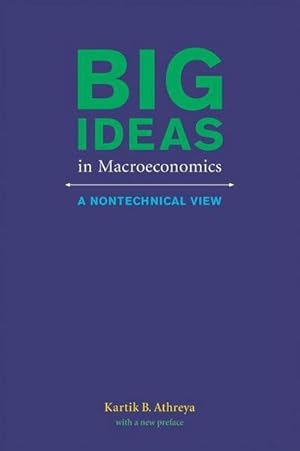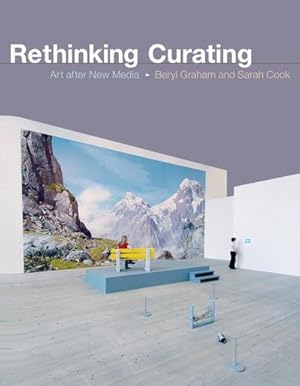mit press ltd aug 2015 (3 Ergebnisse)
Produktart
- Alle Product Types
- Bücher (3)
- Magazine & Zeitschriften
- Comics
- Noten
- Kunst, Grafik & Poster
- Fotografien
- Karten
- Manuskripte & Papierantiquitäten
Zustand
Einband
- alle Einbände
- Hardcover
- Softcover (3)
Weitere Eigenschaften
- Erstausgabe
- Signiert
- Schutzumschlag
- Angebotsfoto (3)
Gratisversand
- Versand nach USA gratis
Land des Verkäufers
Verkäuferbewertung
-
In 100 Years : Leading Economists Predict the Future
Verlag: MIT Press Ltd Aug 2015, 2015
ISBN 10: 0262528347ISBN 13: 9780262528344
Anbieter: AHA-BUCH GmbH, Einbeck, Deutschland
Buch
Taschenbuch. Zustand: Neu. Neuware - In this book, ten prominent economists including Nobel laureates and several likely laureates offer their ideas about what the future might hold in 100 years.This pithy and engaging volume shows that economists may be better equipped to predict the future than science fiction writers. Economists' ideas, based on both theory and practice, reflect their knowledge of the laws of human interactions as well as years of experimentation and reflection. Although perhaps not as screenplay-ready as a work of fiction, these economists' predictions are ready for their close-ups. In this book, ten prominent economists including Nobel laureates and several likely laureates offer their ideas about the world of the twenty-second century.In scenarios that range from the optimistic to the guardedly gloomy, these thinkers consider such topics as the transformation of work and wages, the continuing increase in inequality, the economic rise of China and India, the endlessly repeating cycle of crisis and (projected) recovery, the benefits of technology, the economic consequences of political extremism, and the long-range effects of climate change. For example, 2013 Nobelist Robert Shiller provides an innovative view of future risk management methods using information technology; and Martin Weitzman raises the intriguing but alarming possibility of using geoengineering techniques to mitigate the inevitable effects of climate change.Contributors Daron Acemoglu, Angus Deaton, Avinash K. Dixit, Edward L. Glaeser, Andreu Mas-Colell, John E. Roemer, Alvin E. Roth, Robert J. Shiller, Robert M. Solow, Martin L. Weitzman.
-
Big Ideas in Macroeconomics : A Nontechnical View
Verlag: MIT Press Ltd Aug 2015, 2015
ISBN 10: 0262528304ISBN 13: 9780262528306
Anbieter: AHA-BUCH GmbH, Einbeck, Deutschland
Buch
Taschenbuch. Zustand: Neu. Neuware - An accessible description of modern macroeconomics, and a defense of its policy relevance.Macroeconomists have been caricatured either as credulous savants in love with the beauty of their mathematical models or as free-market fundamentalists who admit no doubt as to the market's wisdom. In this book, Kartik Athreya draws a truer picture, offering a nontechnical description of prominent ideas and models in macroeconomics, and arguing for their value as interpretive tools as well as their policy relevance. Athreya deliberately leaves out the technical machinery, providing an essential guide to the sometimes abstract ideas that drive macroeconomists' research and practical policy advice.Athreya describes the main approach to macroeconomic model construction, the foundational Walrasian general-equilibrium framework, and its modern version, the Arrow-Debreu-McKenzie (ADM) model. In the heart of the book, Athreya shows how the Walrasian approach shapes and unifies much of modern macroeconomics. He details models central to ongoing macroeconomic analyses: the neoclassical and stochastic growth models, the standard incomplete-markets model, the overlapping-generations model, and the standard search model. Athreya's accessible primer traces the links between the views and policy advice of modern macroeconomists and their shared theoretical approach.
-
Rethinking Curating : Art after New Media
Verlag: MIT Press Ltd Aug 2015, 2015
ISBN 10: 0262528428ISBN 13: 9780262528429
Anbieter: AHA-BUCH GmbH, Einbeck, Deutschland
Buch
Taschenbuch. Zustand: Neu. Neuware - Redefining curatorial practice for those working with new kinds of art.As curator Steve Dietz has observed, new media art is like contemporary art but different. New media art involves interactivity, networks, and computation and is often about process rather than objects. New media artworks are difficult to classify according to the traditional art museum categories determined by medium, geography, and chronology and present the curator with novel challenges involving interpretation, exhibition, and dissemination. This book views these challenges as opportunities to rethink curatorial practice. It helps curators of new media art develop a set of flexible tools for working in this fast-moving field, and it offers useful lessons from curators and artists for those working in such other areas of art as distributive and participatory systems.The authors, both of whom have extensive experience as curators, offer numerous examples of artworks and exhibitions to illustrate how the roles of curators and audiences can be redefined in light of new media art's characteristics. Rethinking Curating offers curators a route through the hype around platforms and autonomous zones by following the lead of current artists' practice.




